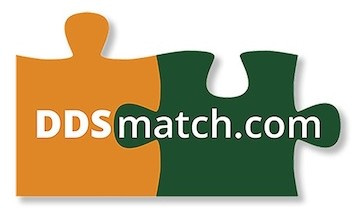For many dentists who own their practice, the process of selling their practice will be their last opportunity to properly maximize one of the largest assets in their portfolio. How did we get to where we are today regarding dental practice pricing and value? For most dentists, seeing that their practice was worth 5.5x EBITDA was likely confused for an unwanted algebra equation that they were in no mood to understand let alone solve. Moreover, the term free cashflow is another construct that may confuse even the savvier practice owner. So, how did “EBITDA” and “free cashflow” become so important to determine a practice’s value?
Starting over five decades ago in the 70s, many dental practice transitions did not even include a practice value. Selling dentists would hire an aspiring dental school student to work as an apprentice for a period until the apprentice “earned” their way to taking over the practice from the retiring dentist. This would culminate with the associate building their business in an extra operatory, and eventually buying the seller’s equipment and patient base through a “handshake” agreement. This worked well when the industry was less technologically driven and had two ops, two staff members on payroll, and just two appointment times a day, morning, and afternoon.
Recare, Technology, and Increased Dental Practice Value
Since then, the dental industry started to understand there is significant value in the recurring patient base. Throughout the 80s and early 90s, dental practices were typically valued using a thumb, a rule of thumb, and often without a professional team supporting the transaction. Largely, these deals were cordial in nature by taking an average of collections from the three previous years and applying a revenue multiplier between 55% and 75%.
As practice’s have adapted into utilizing more technology, leveraged their staff (i.e. hygienists, dental assistants, expanded duty, dentist associates), and have become sophisticated businesses instead of a cottage industry, the way practices are valued and transacted have become equally more complicated. The industry accepted rule of thumb has increased to 65%-85% of collections based on increased profit margins and productivity for the average practice. However as with any rule of thumb, there are a lot of variables to take into consideration whether a practice falls above, below, or within these general ranges.
Since the business plans of practices have changed, dental practice valuations are now much more detailed than simply relying on the measurement of a thumb. Now, hundreds of aspects of the dental practice are considered in determining a practice value including but not limited to the practice location, number of operatories, and taking a large lens to the financial statements. The wider view of the subject practice’s economics now considered by valuation experts includes variables like the practice’s overall overhead, the free cash flow of the practice, and in general practices, the hygiene production to dentist production ratio to name a few.
Answering the ultimate question for dentist-to-dentist transactions is this: after removing the owner from the equation, what will the buyer’s life look like after transaction. This is what free cash flow illustrates and answers the most important question to the buyer: “What is available to the buyer after debt service, taxes, and replacing equipment?” In general, the more free cash flow a practice can generate, the higher the value of the practice.
To complicate matters, someone broke the poorly kept secret to private equity groups and dental service organizations (DSOs), that dental practices bring in a handsome amount of money, so these savvy investors inevitably got involved. DSOs care very little about the traditional rule of thumb when it comes to valuations, and they put the largest weight of the valuation into EBITDA and the EBITDA multiple.
What is EBITDA?
EBITDA, which is an acronym for Earnings Before Interest, Taxes (income taxes), Depreciation, and Amortization, is a common form of earnings or income used in the finance industry. EBITDA is typically considered “normalized” earnings and therefore comes with several adjustments to the historical income statements. The main adjustments include owners’ compensation, personal or discretionary spending, and unique or non-recurring expenses. Then, these groups will use a multiplier to apply to EBITDA in determining the value of the subject practice. The multipliers will fluctuate from buyer to buyer, but in general, the lower the overall EBITDA the lower the multiplier.
Therefore, if you have a practice collecting $1,000,000 with EBITDA of $150,000 and a DSO offers a 5.0x multiple, that will make the Practice’s value $750,000. However, a $3,000,000 revenue practice with a $600,000 in EBITDA could potentially secure between a 6x or 6.5x multiple that would indicate a value between $3.6M and $3.9M, which is now well above the traditionally accepted rule of thumb.
DSO Deals and Terms: Critical to The Seller
Are you familiar with the phrase, “You name the price, I’ll name the terms?” That idea applies to working with DSOs and private equity groups. The structure of the deal can vary widely with each transaction, and this can impact the overall potential economic value of the practice. These variables include how much cash is offered at close, what type of equity and how much equity is the dentist rolling over, is there an earnout or clawback, how many years does the dentist need to work post close, is there a cap on the multiplier for the dentist when the DSO recapitalizes, etc.
While EBITDA and the market multiple play significant pieces in determining the value of the practice, the terms of the deal are just as significant in determining the overall economic value to the dentist. Nonetheless, DSOs are consistently assessing market values to practices that are well above the historical rule of thumb that has impacted the way valuators analyze the price of a dental practice.
However, it is important to find the right strategic fit for the selling dentist. It may prove fruitful to weigh leaving some dollars on the table in light of a more enjoyable working sunset with the right partner. Fortunately, there are experts ready and willing to help sellers work through all the variables in a DSO transaction in order to help find the right solution for sellers that are ready to unwind.
Current Factors Impacting Dental Practice Sales
Adding to this changing dental transaction landscape, recent micro and macro-economic conditions are playing a role in values. Rising interest rates and operating costs have certainly had an impact across the world, particularly on the cost to finance. Buyers’ debt service has increased with rates moving from 3% a couple years ago to over 7% for a ten-year note. Inflation has put some pressure on dental practices that are insurance based, since their ability to increase fees is limited. A shortfall of mid-level providers such as hygienists and dental assistants have also been tough to navigate with many leaving the profession during Covid 19. Increasing rates and inflation are a natural headwind to values. So, how is all this affecting the Dental Industry?
Despite these challenges, most practices continue to thrive in a slightly more challenging environment. Practice’s that build a good team of advisors, that help them navigate and stay on course continue to grow from both a top-line and a bottom-line perspective. It is a tougher business environment for lifestyle practices or wholly insurance-based practices that have had difficulty absorbing inflationary trends and staffing demands.
The factors above have slightly decreased the value of practices, but in many geographies, inventory levels and the number of buyers means that practice values remain healthy. In general, this maintains the norm over the last five years, in that it’s mostly a sellers’ market in urban and suburban areas. Rural practices and superspecialists continue to be a buyers’ market, with correlating values due to demand.
Executing the Grand Finale’ of your Career
Now that we have discussed a brief history of values and valuation methodologies and the current environment, let’s turn this to a more practical discussion. Our team is involved in roughly 400 dental transactions a year. We would like to share a few lessons that we have learned before a business owner makes this all-important transition.
How does one determine going about the transition process? First and foremost, find the right ddsmatch broker to quarterback your transition. Two things kill deals: time and confusion and ddsmatch brokers keep deals on track and ensure all players in the deal are informed and meeting expectations.
Second, the seller needs to paint, at least in pencil, what their sunset looks like with the most important element determining how many more years they wish to work and just as important, what they will do with their time after dentistry. The longer the runway, and the more options are available. The more certainty on what life is going to look like post-transaction, the more apt you will be able to pull the trigger and accomplish a deal.
In addition to outlining personal and professional goals, dentists need to understand the key players in the dental transition process and the role that they play. That deal team consists of a broker, lawyer, and business valuator who need to coordinate with your current professional team like your CPA and investment advisors. Professionals do the best work for you when they work together.
Dental transactions have changed over time, and they will continue to do so. They will only become more complicated as private equity continues to invest in the industry. Now is a great time to meet with dental specific professionals and intentionally plan for your transition plan. Transitions that yield the highest results with the most options available to business owners start planning well in advance of five years prior to retirement.
Ryan Anoskey, CPA, CVA Manager Blue & Co., LLC
Matthew Howard, CPA/ABV Senior Manager Blue & Co., LLC

